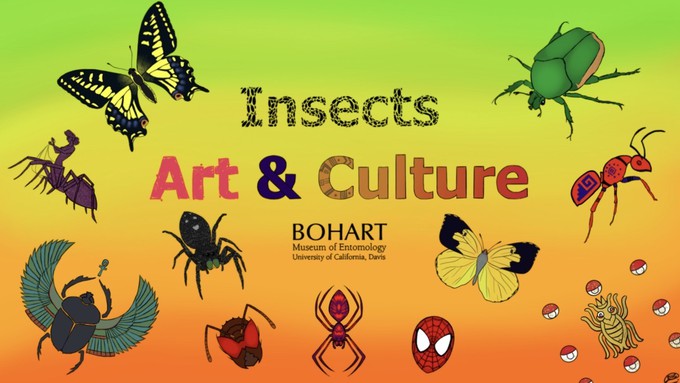
Loomis in the spotlight with compost class, High-Hand Nursery event

The Bohart Museum of Entomology celebrates insects in art and culture during its Saturday event. Bohart Museum of Entomology, UC Davis
Another busy October weekend! In addition to the Sierra Foothills Rose Show, which we wrote about earlier this week, these gardening and outdoor events are on tap Saturday:
– Free composting workshop, 10:30-11:30 a.m. Saturday at the Loomis Library, 6050 Library Road, Loomis. The Placer County master gardeners will present the basics of backyard composting and how it can improve the soil. Learn how to get started and keep the compost pile healthy.
— Special talk on “Plants, Insects and Art: Mary Foley Benson's Scientific Illustrations,” 11 a.m. Saturday at the Teaching and Learning Complex (TLC) Building on the UC Davis campus. This event is part of Spirit Week for Aggie students, parents and alumni, but all are welcome. Srđan Tunić, a candidate for an M.A. in art history and an associate at the Bohart Museum of Entomology at UC Davis, will highlight the work of the late artist (1905-1992) and the collection of her work owned by UC Davis. Here’s a link to her beautiful illustration of a harlequin bug.
– October Outreach event focusing on “Insects, Art & Culture,” 1-4 p.m. Saturday at the Bohart Museum of Entomology, UC Davis. The Bohart invites everyone to come learn about insects through the lenses of art and culture. (Spider-Man, anyone?) This event also is part of Spirit Week but the public is welcome. Free admission and parking. The Bohart is in Room 1124, Academic Surge Building, 455 Crocker Lane, UC Davis Main Campus. Map here.
– Grand opening of the High-Hand Mercantile, 5-8 p.m. Saturday. High-Hand Nursery and Cafe in Loomis is ready to reveal the renovated Mercantile. Light bites and complimentary wine while it lasts, and 10 percent off all purchases at the High-Hand Flower Market and on all pottery. 3570 Taylor Road, Loomis. Map here
-- Kathy Morrison
Comments
0 comments have been posted.Sacramento Digs Gardening to your inbox.
Sites We Like
Garden Checklist for week of April 21
This week there’s plenty to keep gardeners busy. With no rain in the immediate forecast, remember to irrigate any new transplants.
* Weed, weed, weed! Get them before they flower and go to seed.
* April is the last chance to plant citrus trees such as dwarf orange, lemon and kumquat. These trees also look good in landscaping and provide fresh fruit in winter.
* Smell orange blossoms? Feed citrus trees with a low dose of balanced fertilizer (such as 10-10-10) during bloom to help set fruit. Keep an eye out for ants.
* Apply slow-release fertilizer to the lawn.
* Thoroughly clean debris from the bottom of outdoor ponds or fountains.
* Spring brings a flush of rapid growth, and that means your garden is really hungry. Feed shrubs and trees with a slow-release fertilizer. Or mulch with a 1-inch layer of compost.
* Azaleas and camellias looking a little yellow? If leaves are turning yellow between the veins, give them a boost with chelated iron.
* Trim dead flowers but not leaves from spring-flowering bulbs such as daffodils and tulips. Those leaves gather energy to create next year's flowers. Also, give the bulbs a fertilizer boost after bloom.
* Pinch chrysanthemums back to 12 inches for fall flowers. Cut old stems to the ground.
* Mulch around plants to conserve moisture and control weeds.
* From seed, plant beans, beets, cantaloupes, carrots, corn, cucumbers, melons, radishes and squash.
* Plant onion sets.
* In the flower garden, plant seeds for asters, cosmos, celosia, marigolds, salvia, sunflowers and zinnias.
* Transplant petunias, zinnias, geraniums and other summer bloomers.
* Plant perennials and dahlia tubers for summer bloom.
* Mid to late April is about the last chance to plant summer bulbs, such as gladiolus and tuberous begonias.
* Transplant lettuce seedlings. Choose varieties that mature quickly such as loose leaf.